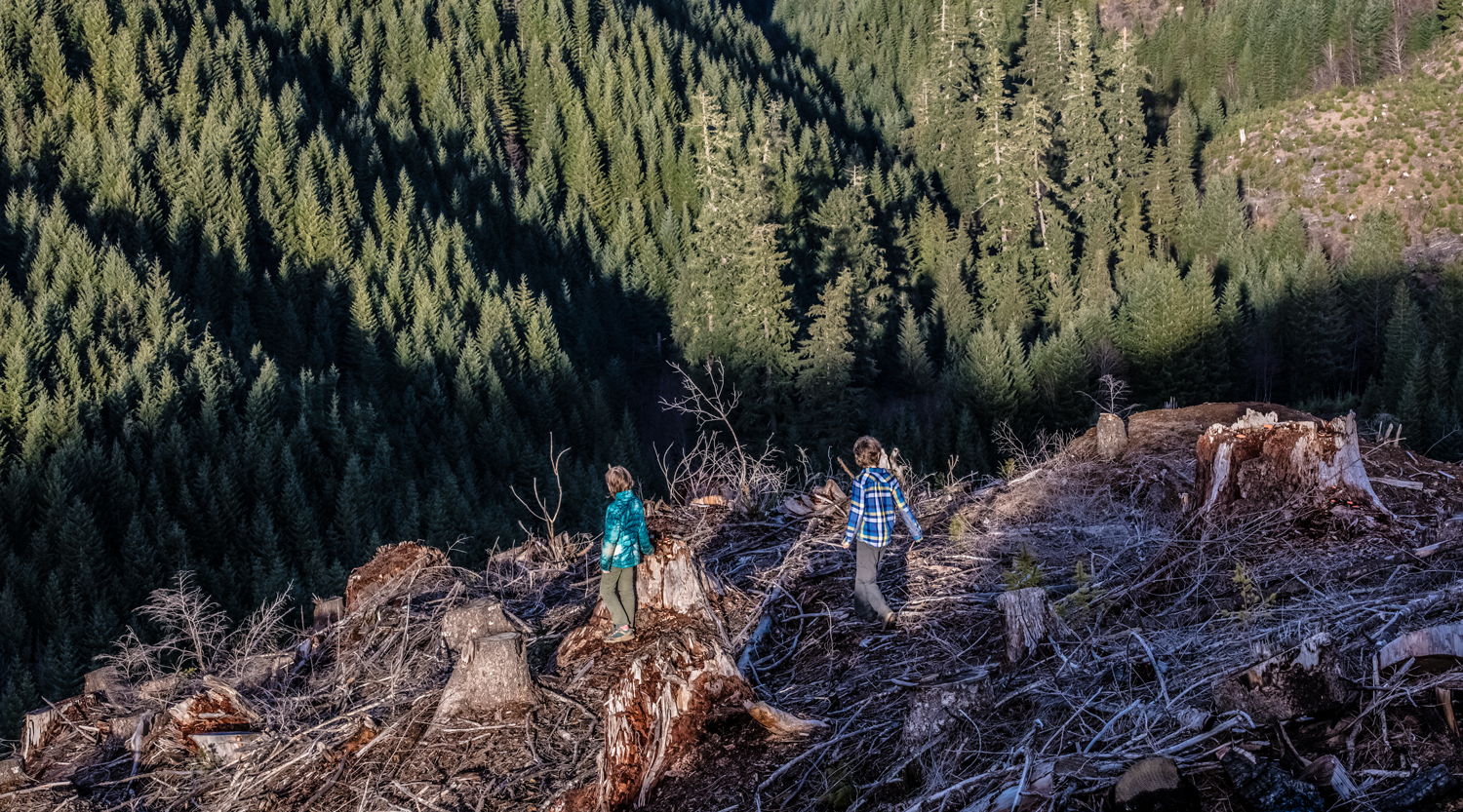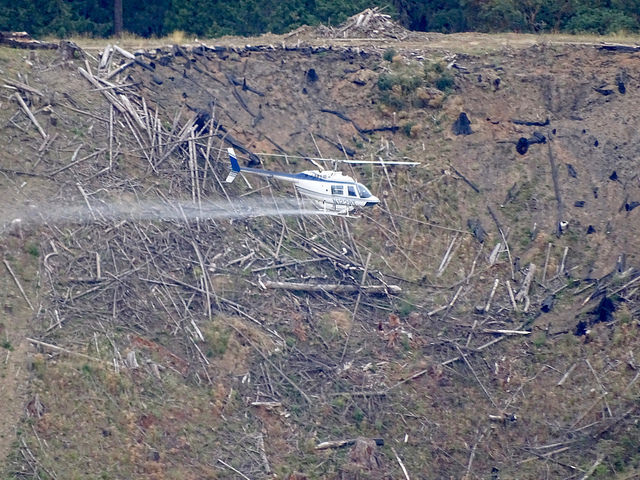
by Dominick A. DellaSala, Ph. D, Chief Scientist, Geos Institute
If a tree grows in a forest, does that make it a forest? Does planting trees compensate for cutting down a forest? How do we know we are in a forest or an unreasonable facsimile (“fake”) there of?
A new publication “The World’s Biomes” is set for release in libraries globally in 2020. It will feature my chapter on fake vs. real forests. Contact me at [email protected] for an advanced copy of this chapter.
In the meantime, here’s a sneak preview of what’s inside a real vs. fake forest.

Forests are in the eyes of the beholder. To a forester, they are cash crops planted in dense rows like corn to be thinned, sprayed, and fertilized for the quickest return on investment (usually logged and replanted every 35 years on private lands).
To an ecologist, a real forest is a place where the sum-of-the ecosystem parts is greater than the whole.
Scientists refer to this summation as “ecological integrity.” And it’s simple – real forests have the most integrity, fake ones have none. Unfortunately, real forests are declining globally as fake forests replace them via an unmitigated, massive eco-engineering of the planet.
Real forests are superior to their fake counterparts in every aspect. They are complex structurally from the penthouse (forest canopy) to the basement (soils). Are connected by an Avatar-like sub-highway of root masses and fungal mats that soak up vital soil nutrients and moisture. Their food-webs have interlocking strands that join squirrel to pine cone and squirrel to owl, deer to grass and deer to lion, and slugs to rotten logs (not sure what eats a slug!), and so on.
Real forests also are nature’s climate solutions, serving as enormous air filters and giant cooling towers, increasingly vital in a rapidly warming and drying world and for flood protection in a wetter one (i.e., “green infrastructure”).
And to put this in a real-world context, I was at a recent meeting of Oregon Governor Kate Brown’s stakeholder group on forest carbon where members of the timber industry were arguing that they plant two trees for every one that they log and therefore that is a net climate benefit! This fuzzy math argument didn’t work in the 1980s as activists won the hard fought battle to ban nearly all old growth logging on federal lands, and it doesn’t pencil out today as logging real forests and converting them to fake ones contributes more carbon dioxide pollution than any industrial sector. In fact, when the real forest is logged and made into wood products, some 62% of its stored carbon is emitted as carbon dioxide, with the rest stored temporarily in products that last only a year (paper) to decades (buildings) before decaying in landfills. Planting trees or entombing wood in buildings does not compensate for carbon held by real forests for centuries.
Plantations, tree farms, industrial forests, whatever one calls them, these "fake forests" are a poor substitute for real forests--particulary old-growth stands. They are prone to intense forest fires, are climate polluters, and are biologically impoverished “ecosystems.”
--------------------------------------
To request an advanced copy of Dominick's chapter in the new scientific publication “The World’s Biomes” email [email protected]. You can find out more about the Geos Institute and their work here.

